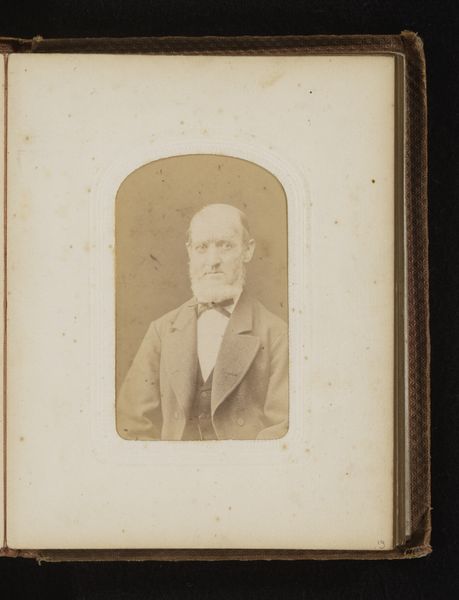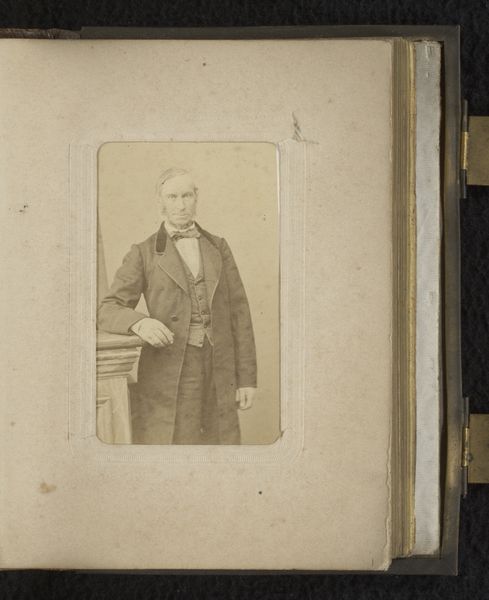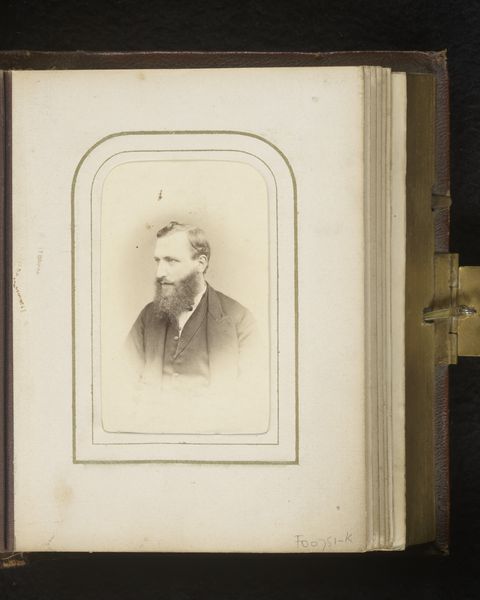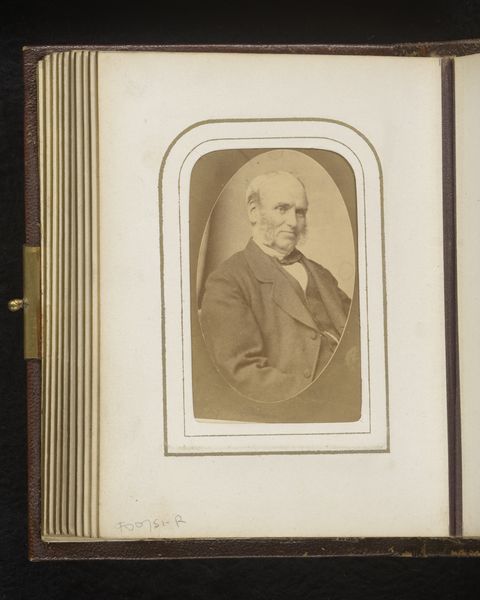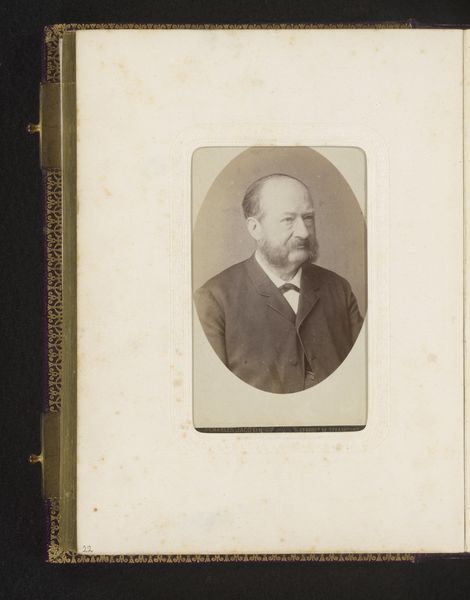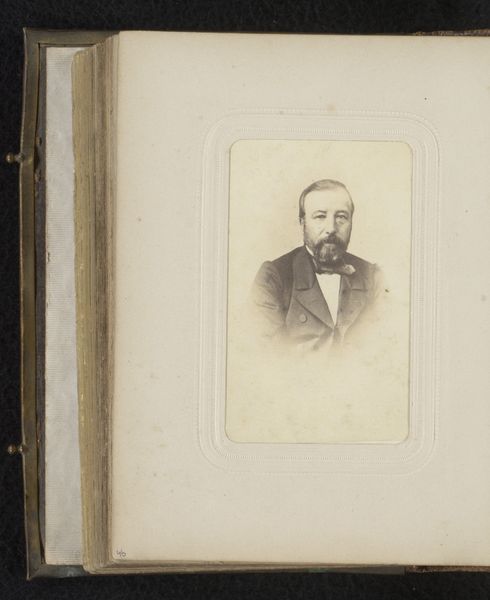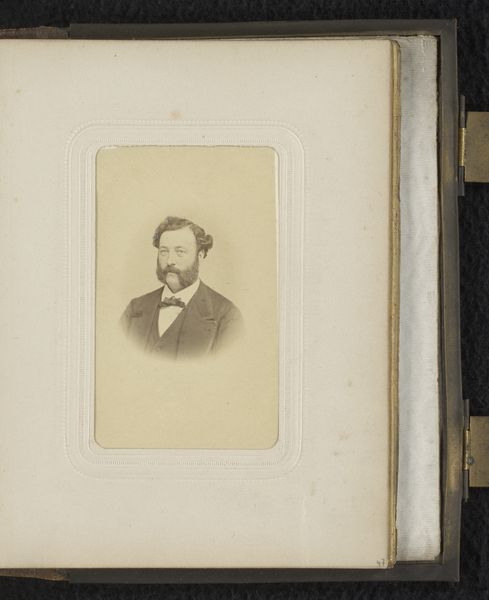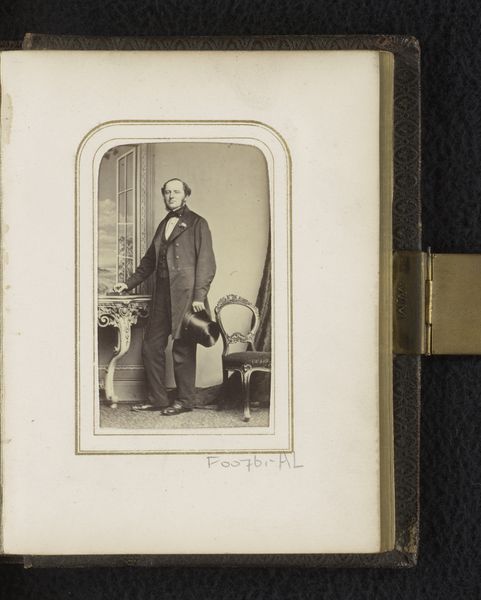
photography, gelatin-silver-print
#
portrait
#
photography
#
gelatin-silver-print
#
genre-painting
#
academic-art
Dimensions: height 80 mm, width 52 mm
Copyright: Rijks Museum: Open Domain
Curator: This photograph, simply titled "Portret van een man," or "Portrait of a Man," comes to us from the lens of photographer Victor, dated sometime between 1860 and 1900. It's a gelatin-silver print. What are your first thoughts? Editor: Sepia tones always lend a sense of nostalgia, don't they? It's quite soft, almost dreamlike. The man’s pose feels very staged and composed, hinting at formality but his slightly softened, blurred edges betray vulnerability. Curator: Absolutely. Let’s consider the gelatin-silver printing process. Its emergence was revolutionary. Compared to earlier photographic methods, it allowed for shorter exposure times and greater detail. This print offered a cost-effective way to produce portraits for a growing middle class. Editor: I'm drawn to the symmetrical balance within the frame. The portrait’s position inside the oval window accentuates a very stable pyramidal structure and contributes to the solemnity. I want to inquire more about the emotional aspect of his look. Curator: Well, in that era, studios like Victor's often operated on a small scale, employing local workers and catering to the community. These photographic studios filled the role of portrait painters, capturing likenesses that marked milestones or preserved memories. He may have felt a great amount of pressure as an entrepreneur. Editor: Looking closely, the way the light catches the slight details, is intriguing, especially on his eyes and whiskers, despite the somewhat soft focus. It would be good to look further into its connection to period painting. Curator: It would, indeed. Consider also that portraiture became more accessible, democratizing art production and consumption. It raises questions about who was included and excluded in this visual record. Editor: I think what impresses me most is the feeling it exudes in the context of history. Despite its technical elements, the essence it has seems universal. Curator: Agreed. Ultimately, whether seen through a materialist or formalist lens, "Portrait of a Man" provides a tangible link to the past.
Comments
No comments
Be the first to comment and join the conversation on the ultimate creative platform.

